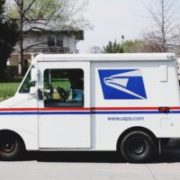Protection from Mail Theft
 Mail theft is a pervasive issue across the country, and it’s important to take proactive steps to protect yourself from falling victim to this crime. Thieves often target mail that has not yet been picked up, searching for items such as gift cards, credit card applications, and utility bills that can be used to steal your identity.
Mail theft is a pervasive issue across the country, and it’s important to take proactive steps to protect yourself from falling victim to this crime. Thieves often target mail that has not yet been picked up, searching for items such as gift cards, credit card applications, and utility bills that can be used to steal your identity.
Here are some additional measures you can take to safeguard your mail:
Invest in a Locking Mailbox:
Obtaining a locking mailbox is one of the most effective and convenient ways to prevent mail theft. While the cost may vary, starting around $80, the investment is well worth the peace of mind. Consider coordinating with your neighbors to purchase a community mailbox if you live in a community setting. A handy neighbor can assist with the installation process, and it’s important to ensure that the chosen mailbox is approved by the postal service.
Regularly Retrieve Your Mail:
Make it a habit to collect your mail promptly, as close to the delivery time as possible. If you work during the day, retrieve your mail on your way home from work. Avoid leaving mail in the mailbox overnight or for an extended period.
Use Caution with Outgoing Mail:
Avoid using the red flag on your outgoing mailbox, as it can signal to potential thieves that there may be valuable items inside. Instead, wait until the mail carrier’s expected arrival time or consider taking your outgoing mail to work where it can be securely mailed through the company’s system.
Seek Assistance from Neighbors:
When expecting valuable or important mail, such as birthday cards or holiday packages, consider asking a trusted neighbor to pick up your mail for you. Additionally, with the United States Postal Service now delivering packages for Amazon on Sundays, remember to check your mailbox on Sundays for any special deliveries.
Opt for Informed Delivery:
Informed Delivery is a free service provided by the USPS that allows you to preview images of your incoming mail before it is delivered. By signing up for this service, you can stay informed about what mail to expect and take appropriate action if something is missing or appears suspicious.
Shred Unwanted Mail:
Dispose of unwanted mail, especially those containing personal information, by shredding it before throwing it away. This helps ensure that any sensitive details cannot be easily accessed by potential identity thieves.
By implementing these preventive measures, you can significantly reduce the risk of falling victim to mail theft and protect your personal information. Remember to stay vigilant and report any suspicious activity to your local authorities. Together, we can create safer communities and thwart the efforts of mail thieves.



 Hosting Thanksgiving dinner can be a rewarding experience filled with delicious food and quality time with loved ones. However, amidst the fun and festivities, it’s essential to be mindful of potential risks and liabilities associated with hosting a party.
Hosting Thanksgiving dinner can be a rewarding experience filled with delicious food and quality time with loved ones. However, amidst the fun and festivities, it’s essential to be mindful of potential risks and liabilities associated with hosting a party.
 Saving money is always a welcome endeavor, especially when it involves taking a few simple steps. Electricity bills can quickly accumulate, but by implementing a few minor changes, you can lower those bills and allocate the saved funds for other purposes in your monthly budget.
Saving money is always a welcome endeavor, especially when it involves taking a few simple steps. Electricity bills can quickly accumulate, but by implementing a few minor changes, you can lower those bills and allocate the saved funds for other purposes in your monthly budget.